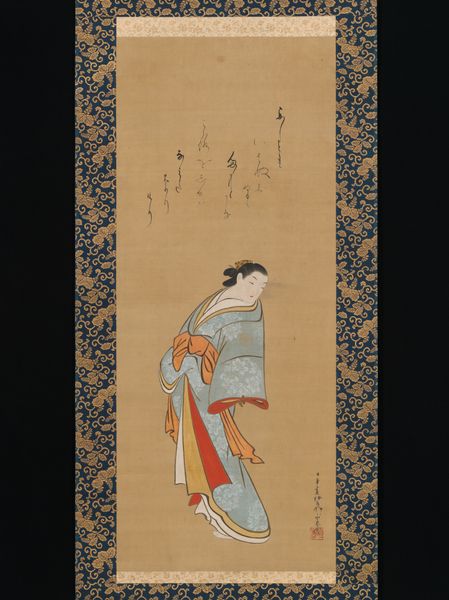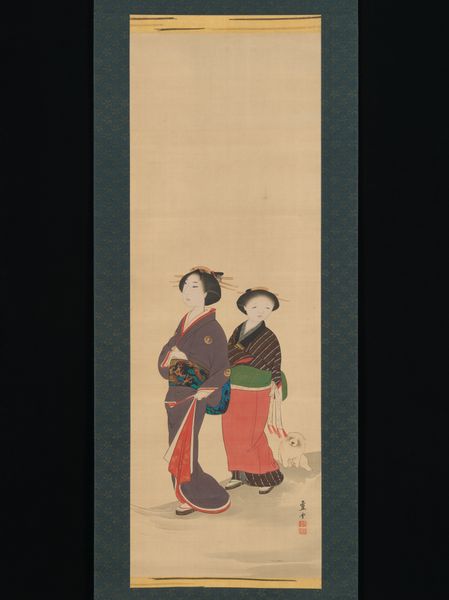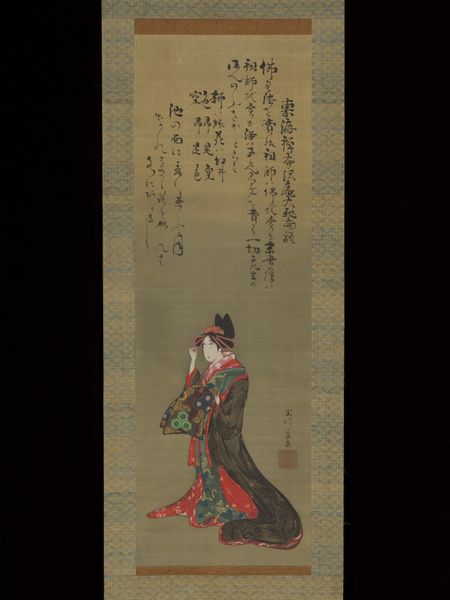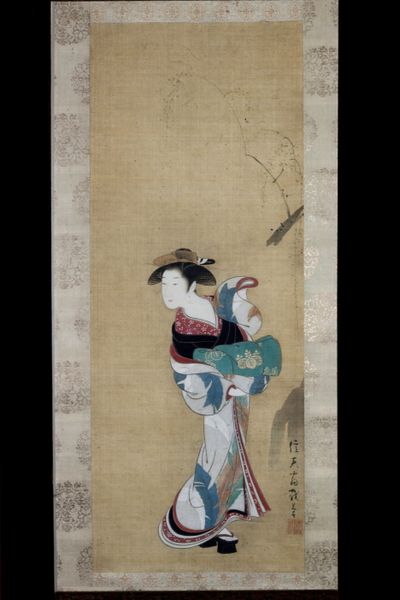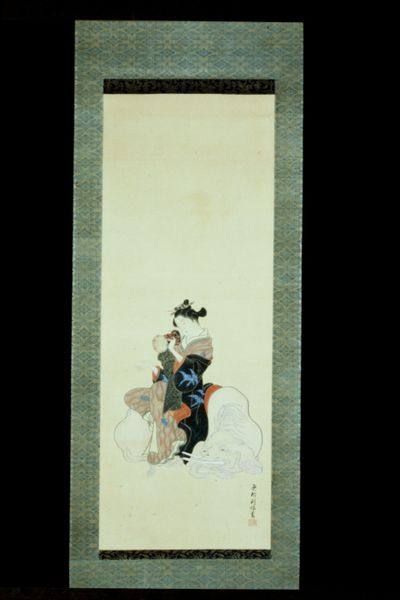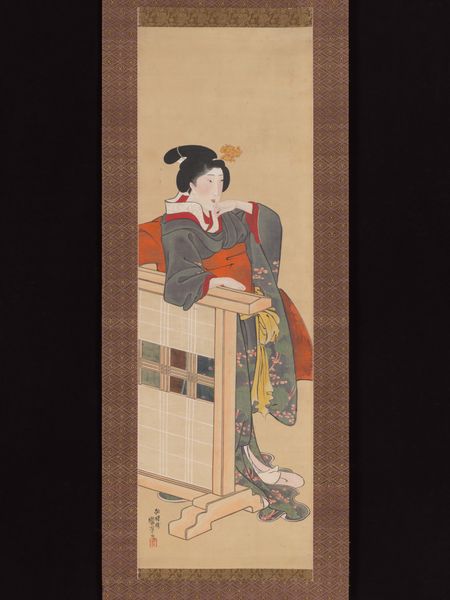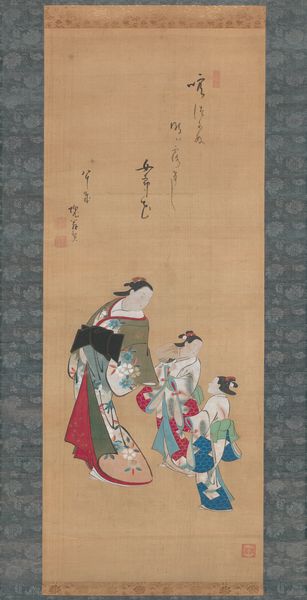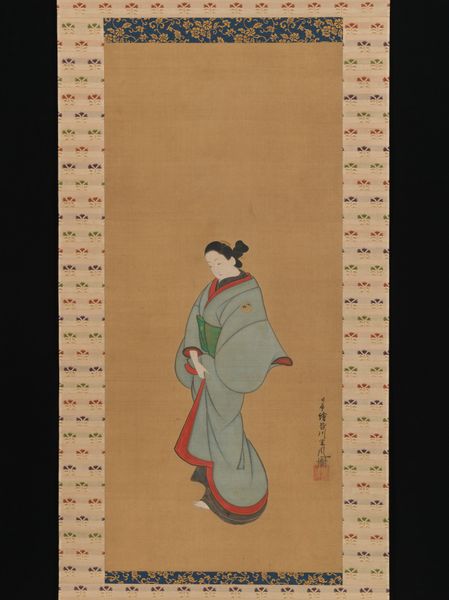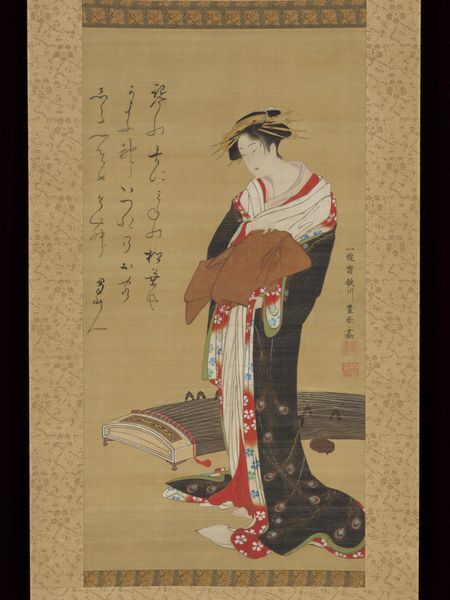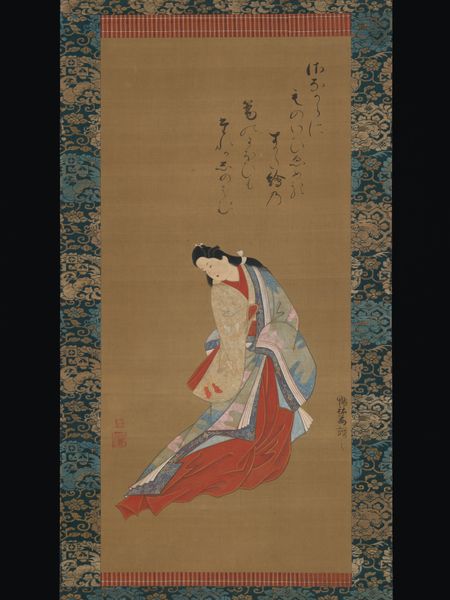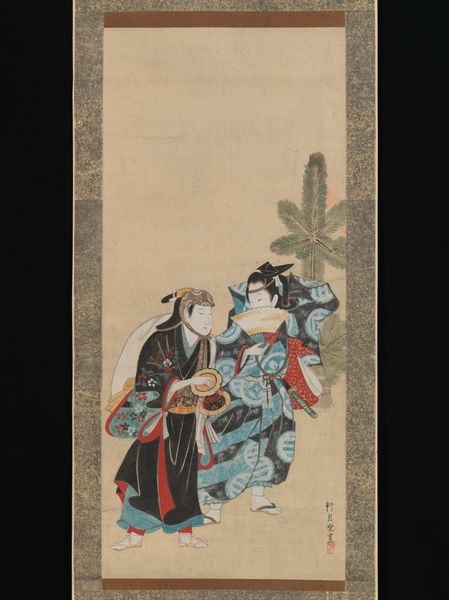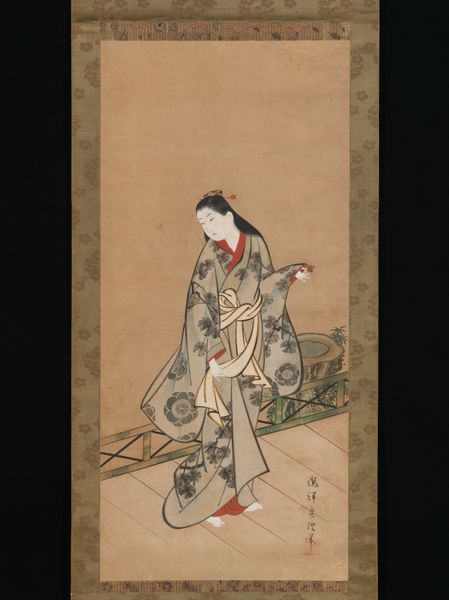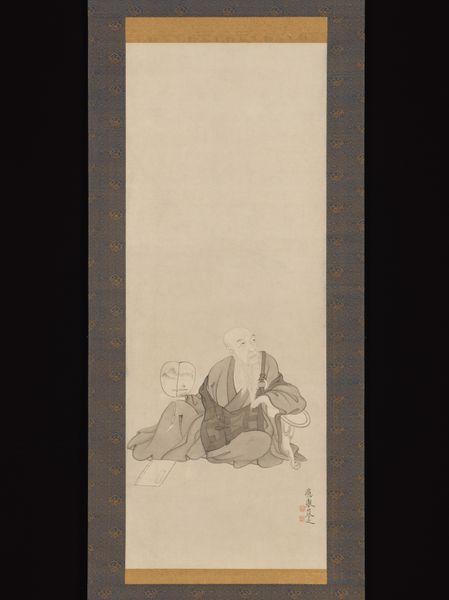
Standing Prostitute Holding Chinese Lantern Fruit c. 1780
0:00
0:00
hanging-scroll
#
portrait
#
asian-art
#
ukiyo-e
#
figuration
#
hanging-scroll
#
intimism
#
watercolor
#
calligraphy
Dimensions: 36 5/8 x 15 3/8 in. (93 x 39 cm) (image)70 1/16 x 16 9/16 in. (178 x 42 cm) (mount) 47 cm W w/roller
Copyright: Public Domain
Curator: There's a tender pensiveness to this piece. It's titled *Standing Prostitute Holding Chinese Lantern Fruit,* crafted around 1780 by Tsukioka Settei. Editor: The very phrase 'standing prostitute' demands we examine the material realities behind the shimmering facade of ukiyo-e. I am curious to understand the actual production of this hanging scroll, given its explicit subject matter and implied patronage. Curator: Patronage is a curious thing, isn't it? Ukiyo-e prints are so often associated with the 'floating world,' pleasure, transience, yet this...this feels deeply personal, almost an intimate portrait despite the overt subject. Editor: I am less inclined to frame the ‘floating world’ as carefree, as that obscures its grounding in an urban, mercantile system. I'm wondering about the paper, the inks, and the workshop it emerged from; I see those not as barriers, but as part of the aesthetic project. How did Settei procure the specific pigment to depict that pale kimono, and how were these choices related to commodity chains, or the artistic schools prevailing at the time? Curator: Perhaps. For me it's about the emotion caught, the fall of the head, the soft blush. It's as though Settei saw *her*, beyond just 'a prostitute.' Do you not feel it? Editor: I acknowledge its delicacy and restraint in the rendering, yet remain critical of this romantic lens. It’s vital to analyze how Settei's individual craft intersected with pre-existing visual vocabularies within the ukiyo-e tradition. How much agency did she truly have in representing herself versus the market expectations and artistic constraints Settei would have faced. Curator: Perhaps he hoped, as every artist secretly does, to capture not just a likeness, but a fragment of the soul. To show humanity shimmering, even – and especially – amidst the ordinary, the transactional. It serves as a reminder of how profoundly vulnerable the essence of the individual really is. Editor: So the question remains for me is: where exactly does "craft" reside in *Standing Prostitute Holding Chinese Lantern Fruit*? And does it invite reflection, or ultimately reify, the economic and societal power at play? Curator: So true. Editor: Very much so.
Comments
No comments
Be the first to comment and join the conversation on the ultimate creative platform.
